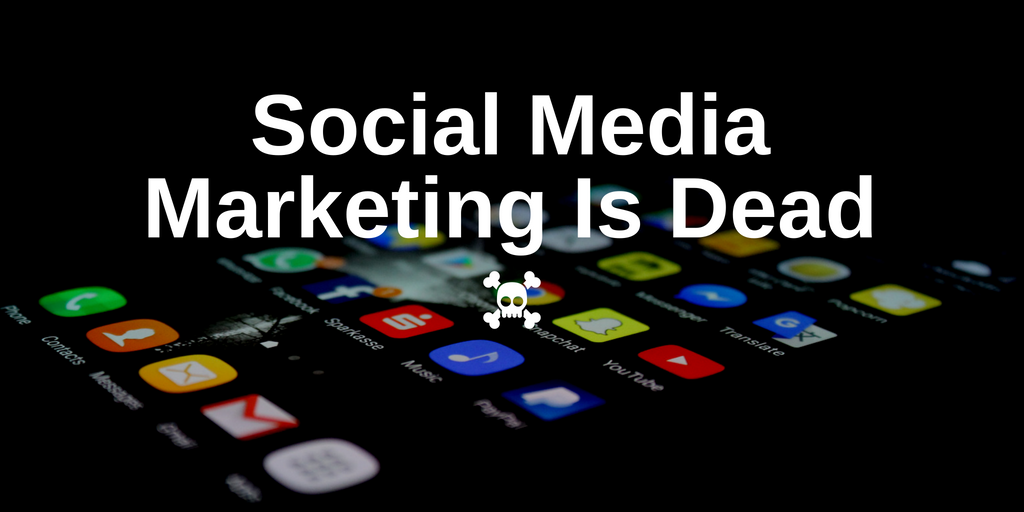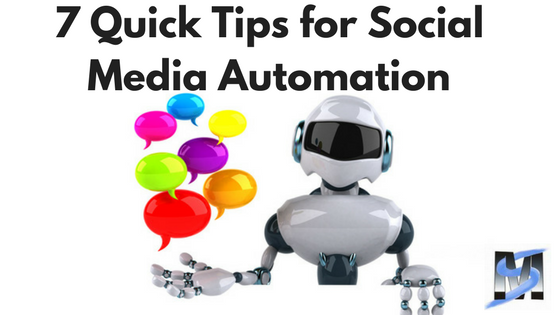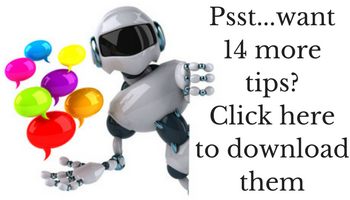
Before you start gathering an angry mob and pillage the comment section, just hear me out.
Social media marketing is at the heart of almost every marketing campaign now. Many businesses are moving the bulk of their marketing budget to social media. And that’s great for them.
My question to you is: “Is this the right method for your business?
It would be very sacrilegious of me to not recognize the value of social media. I’m really not THAT old…
Social media and the online world are fantastic tools. And that’s exactly what they are.
Tools.
Tools to help you find where your customer is and show up in front of them.
For far too long there’s been this distinction between “social media marketing” and “traditional marketing”.
Right now, we’re getting back to where it’s just “marketing”. And you need to make sure that everything you’re doing is in alignment.
Here’s what I mean by this.
It wouldn’t be to your advantage to set up a LinkedIn marketing campaign just because LinkedIn is the social media platform you use the most.
Because when it comes to any type of marketing the first question should not be “What tools should I use?”.
Instead, Ask Yourself “Where Are My Customers?”
Let’s start there.
If you are a local fitness studio, your customers are going to be primarily on Facebook. But maybe a direct mail campaign will work better for them. It all depends on who your customer is.
If you want to reach people over 60, a direct mail campaign is going to be a better option for your studio than an Instagram campaign.
But if you want to reach people under 25 maybe Instagram or Snapchat would be more suitable.
It’s about how well you can identify them.
Anytime I work with somebody, the first thing we do is we talk about their customer type and we talk about the customer avatar. Some people call it customer persona.
It’s the same basic concept, but the idea is to understand your customer well enough to develop your marketing correctly.
You may have more than one customer avatar in your business and that’s fine. But we’ll talk about one for now.
Before You Decide On The Tools, You Have To Have The Basics In Place.
That is the demographics of your ideal customer.
This could be age, potentially race, sex, married, unmarried, whether they may be going to college, university, maybe do they own a house or a car… That’s demographic information.
The best part is that this information is readily available online. People share this information publicly and you just have to find it.
So, you want to make sure that you have that and you understand that.
Now, the second aspect of the customer avatar may sound a bit complex. But don’t worry, I’ll even share this crazy method to get the necessary info from your customers.
This second part is all about what it’s called “a psychographic”. Which is how they think and what are their purchasing habits.
There are actually classifications online that you can get that dig and divide psychographics. But for now, what we need to do is understand the simple stuff. The basics.
We need to look at how they talk, where they are making their purchases and where they are hanging out online.
So, where do they make their purchases? And where do they gather their information for the purchases? And all of that is part of our customer avatar. We want to understand as much as we can about our customers.
I understand this may sound like a lot. And I did mention a crazy method that you can find that information. And that is: You Ask Them.
If you have an offline business, it’s very easy. You ask them when they come in. You talk about it our you ask them questions about themselves.
You just make it a part of your conversation so you understand more about them. And if you want to integrate online marketing into it then you want to make sure that you ask questions about where they hang out online.
If there are any particular groups they are involved in, websites, or even forums.
I know that forums are a 90s thing but they still are very popular in certain markets. And the only way to know what type of marketing you should do in your business, you should know where they spend their time.
In some cases, even if your customers are primarily online you can use “traditional marketing” to break their pattern and stand out.
But it depends on your product as well. Even if you are selling ice cream, you’re probably not selling it online. But you could market it online if that’s where your audience is.
Don’t Look At It As An Only Online Or Only Offline Kind Of Thing.
Look At It As An Integrated Marketing Campaign.
So, that’s where you start.
For example, if you are selling to a professional above 40, certainly above 35, now more and more LinkedIn is where they’re at. So, you might be doing more LinkedIn marketing.
But another question I always ask is “What do they read?”. I like to know what they read because maybe there’s an online site that we can run ads on. Or maybe there’s an offline print magazine we can utilize.
That’s all part of your marketing mix.
It’s hardly ever black and white. It all depends on who your customer is.
And then, after you understand what sites they’re on, you develop the strategy to connect with them.
Let’s talk a little bit about strategy. Maybe you connect with them on a website and you collect their information and send them an email sequence to bring them in as a customer.
Alternatively, if you are running a seasonal sale, you might advertise the sale directly in the magazine they read weekly.
If you know from previous experiences that your customers need a bit more time to think about it before they make an investment with you, you might create a hybrid strategy.
You can start in a magazine, or maybe when they come in your store, and later connect with them online and have that email sequence help them consider becoming a customer or a return customer.
You have to decide what your strategy is to connect with them. But at the end of the day, it’s all marketing.
And that boils down to:
- Understanding who makes up your market, where they hang out, and what their purchasing habits are
- Understanding the messaging they want to see by taking part in numerous conversations with your market
- Find the right medium and tool you are going to use to show that message.
This last point is called in the marketing world “Message To Market Match”. Which is basically if your market relates to your message and to your marketing. If they do, they will become your customers.
If they don’t, it probably means that your message isn’t right, or you need to change the tool. Meaning the social media platform.
So, in my opinion “Social Media Marketing” is dead. It’s just marketing today.
Social media platforms are just tools in your toolbox that you may or may not decide to use. It depends on so many factors that making social media marketing the be-all and end-all of marketing would just be silly.
Some niches are limited to online. But then again, there are limits to many of the markets online.
It depends on how your product/service and who your audience is.
If you want to better understand your market and have a custom strategy, feel free to book an exploratory phone conference at no cost below. And one of our consultants will get back to you right away.
Just click the button below to book a complimentary exploratory call and we will help you set up the right strategy to generate new business.



 There are more people on the internet to buy than can ever walk through your door. Does that mean that I think you should close your doors and just operate online? No I believe that there are some huge benefits to combining the strengths of both channels.
There are more people on the internet to buy than can ever walk through your door. Does that mean that I think you should close your doors and just operate online? No I believe that there are some huge benefits to combining the strengths of both channels.